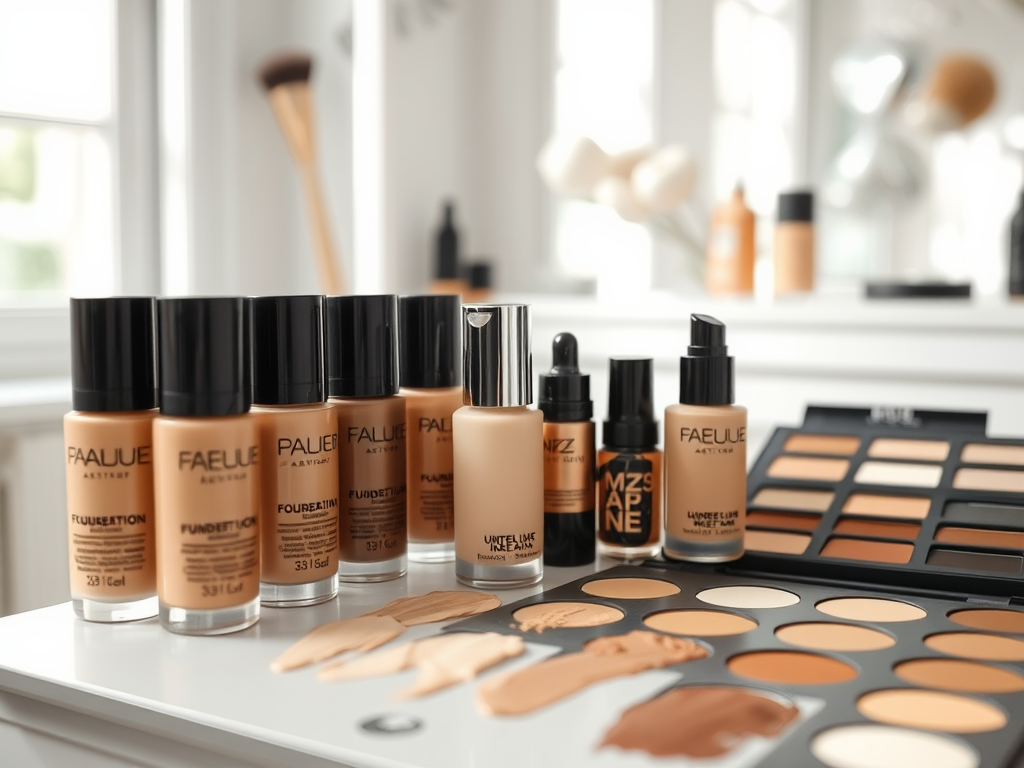
How to Choose the Right Foundation to Avoid Cakey Makeup
Choosing the perfect foundation can make or break your makeup game. The right foundation not only creates an even complexion but also enhances your natural beauty, making your skin look fresh and flawless. Unfortunately, many people encounter the dreaded cakey makeup look, which can stem from a variety of missteps in their makeup routine. Whether it’s selecting the wrong formula, mismatching shades, or applying too much product, there are specific pitfalls that can lead to a less-than-desirable finish. Understanding how to navigate these challenges is crucial for a polished appearance. With a little guidance on the right products and techniques, achieving a beautiful complexion is entirely within reach.
Understanding Cakey Makeup

Cakey makeup occurs when foundation settles into fine lines, clogs pores, or appears overly thick on the skin. This often results in an unflattering, dry appearance that can age you prematurely. Understanding the causes of cakey makeup is the first step to avoiding it altogether. The primary culprits include using products that don’t suit your skin type, applying excessive amounts, or failing to prepare your skin before application. Many times, it’s also a matter of improper application techniques and tools. By pinpointing these factors, you can make informed choices that lead to a more natural look.
- Product Mismatch: Selecting a foundation that doesn’t complement your skin type or tone can lead to visible makeup.
- Too Much Product: Over-applying foundation only creates layers that fail to blend seamlessly.
- Lack of Preparation: Without proper skin prep, even the best foundation can falter.
- Improper Application Techniques: Choosing the wrong tools or methods can transform your look from fresh to heavy.
Identifying Your Skin Type

Identifying your skin type is fundamental in selecting a suitable foundation. Each skin type reacts differently to various formulas and textures, influencing the overall makeup finish. For instance, oily skin might benefit from a matte foundation designed to control shine, whereas dry skin typically requires something more hydrating. Knowing whether your skin is oily, dry, combination, or sensitive will enable you to narrow down your choices effectively. Below is a detailed breakdown of common skin types:
- Oily Skin: Tends to produce excess shine and is more prone to breakouts.
- Dry Skin: Often experiences flakiness and dullness, needing moisturizing foundations.
- Combination Skin: Features both oily and dry patches, requiring a balanced foundation approach.
- Sensitive Skin: Needs gentle, hypoallergenic products to avoid irritation.
Choosing the Right Foundation Formula
With an understanding of your skin type, the next step is to explore the various foundation formulas available. Each formula offers unique benefits, making it essential to select one that aligns with your specific needs. Liquid foundations are the most versatile and work well across different skin types. Cream foundations typically offer fuller coverage, making them ideal for those with dry skin, but they can feel heavy if too much is applied. Powder foundations are suitable for oily skin, although they can settle into fine lines if used excessively. Stick foundations offer the convenience of on-the-go application but may require careful blending to achieve a natural look.
| Foundation Type | Best For | Finish | Tips |
|---|---|---|---|
| Liquid | All Skin Types | Matte/Dewy | Choose based on finish preference. |
| Cream | Dry Skin | Full Coverage | Apply in thin layers. |
| Powder | Oily Skin | Matte | Use sparingly to avoid dryness. |
| Stick | All Skin Types | Varied | Blend well for a seamless finish. |
Finding Your Perfect Shade
Once you’ve identified the ideal foundation formula, the next hurdle is shade selection. One of the most important aspects of applying foundation is choosing a shade that matches your skin tone closely. Applying a mismatched foundation, no matter how well it’s formulated, can cause a stark contrast, leading to a cakey appearance. The best way to find your shade is to test it in natural light whenever possible. Swatching multiple shades on your jawline can help you see how they blend with your natural skin color. Always consider your undertones—cool, warm, or neutral—because this detail can dramatically impact how a foundation appears on your skin.
Application Techniques to Prevent Cakey Makeup
How you apply your foundation is just as critical as the product you choose. To achieve a smooth, natural finish, proper skin preparation is essential. Always start by cleansing your face, followed by applying a moisturizer tailored to your skin type. Next, a primer can create a flawless canvas for foundation application. Make sure to use the right tools; brushes, sponges, or fingers can all yield different effects, and it may take some experimentation to find what works best for you. Building your foundation gradually allows for a more seamless finish and avoids the common pitfall of looking overdone.
- Prepping the Skin: Cleanse, moisturize, and prime before applying foundation.
- Use the Right Tools: Explore brushes, makeup sponges, and fingers to find what gives the best finish.
- Build Coverage Gradually: Start with a small amount of foundation and build up as needed.
Conclusion
To avoid cakey makeup, choosing the right foundation goes beyond just picking a color. It involves understanding your skin type, selecting an appropriate formula, and applying it with care. By following the tips outlined in this article, you can enhance your appearance without falling into the cakey makeup trap. Your complexion can look radiant and fresh with the right strategies. Remember, effective application and preparation can make all the difference in achieving that flawless look.
Frequently Asked Questions
- What causes cakey makeup? Cakey makeup is typically caused by using the wrong foundation, applying too much product, failing to prep the skin, or using improper application techniques.
- How can I determine my skin type? You can determine your skin type by checking how your skin feels throughout the day—whether it’s oily, dry, combination, or sensitive.
- What type of foundation should I use for dry skin? Hydrating liquid or cream foundations work best for dry skin, as they provide moisture and avoid accentuating flakiness.
- How can I ensure my foundation matches my skin tone? Always test foundation shades in natural light and consider both skin tone and underlying undertones when selecting a shade.
- What are the best tools to apply foundation? The best tools include brushes, makeup sponges, or even your fingers, depending on what gives you the smoothest finish for your skin type.

